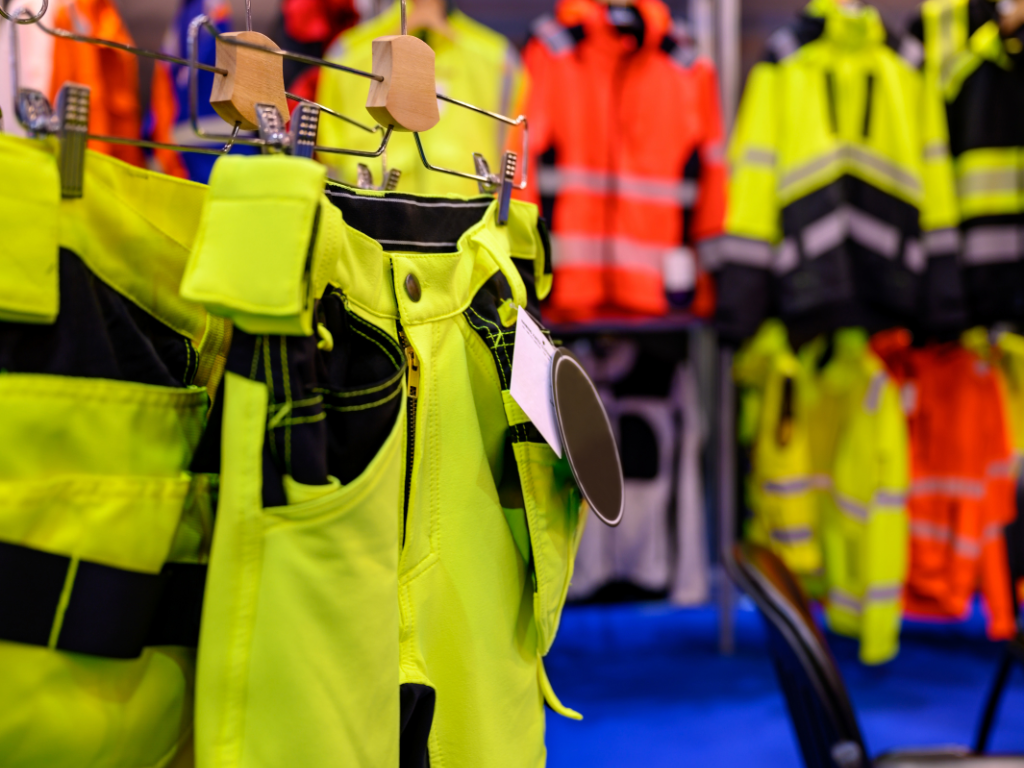Navigating through the world of construction safety can seem daunting. However, understanding each piece of safety gear and clothing, from safety jackets to safety shirts and uniforms, can provide a greater sense of clarity. Let’s delve deeper into the role of each safety item and its significance in the construction industry.

The Importance of Safety Jackets
In the realm of construction, safety jackets play a vital role. Often made of durable materials, these jackets provide protection against various external hazards, including cold, rain, and wind. Additionally, they are an essential aspect of high visibility workwear, designed to keep workers visible in low light conditions or against complex backgrounds.
However, not all safety jackets are the same. Depending on the nature of the work, you might require jackets with added features. Some come equipped with extra padding for added insulation, while others have flame-resistant properties, making them ideal for those working around fire hazards. So, the key is to choose a safety jacket that best aligns with your work requirements.
The Role of Safety Shirts
Safety shirts, another crucial part of safety workwear, offer a twofold purpose. Firstly, like safety jackets, they enhance visibility. With their bright colors and reflective strips, these shirts ensure workers are seen, particularly when working near moving vehicles or heavy machinery.
In addition, safety shirts also provide a degree of protection against workplace hazards. For instance, some safety shirts are designed to be flame-resistant, providing an extra layer of safety for those working in environments prone to fire risks. Additionally, these shirts can be resistant to harmful ultraviolet rays, making them ideal for outdoor work.
Safety Uniforms for Overall Protection
When it comes to overall protection in a construction setting, safety uniforms come into play. These uniforms act as the foundation of a worker’s safety attire, often encompassing safety shoes and glasses. Safety shoes, particularly those with steel caps, provide protection against falling objects and punctures, while safety glasses shield the eyes from dust and flying debris.
But there’s more to safety uniforms than just footwear and glasses. Depending on the job at hand, workers may also need safety gloves and respiratory protection. Safety gloves come in different types, each designed to protect against specific hazards, such as cuts, vibrations, or chemical exposures. On the other hand, respiratory protection, such as masks and respirators, shield workers from inhaling hazardous substances.
Locating Safety Workwear Near Me
Knowing where to find safety workwear near your location can make a significant difference in preparation time. Local safety equipment suppliers often offer a wide array of safety supplies, including high visibility vests, safety tags, and protective clothing. Conveniently located suppliers can provide quicker access to necessary safety equipment, thus minimizing downtime due to equipment shortages or replacements.
Furthermore, you might want to consider suppliers who offer discount workwear. These suppliers provide the necessary safety gear at affordable prices, making safety more accessible for all. However, while cost is a factor, never compromise on the quality of safety workwear, as it is vital for the protection of workers.
Choosing the Right Protective Clothing
Lastly, the task of choosing the right protective clothing is crucial and relies heavily on the nature of the work and the potential hazards involved. Heavy-duty tasks may require robust materials that can endure significant wear and tear, while jobs involving hazardous chemicals might necessitate specific safety uniforms designed for chemical resistance.
Moreover, some jobs may require additional safety gear, like ear protection or full-face shields. It’s crucial to consult with safety experts or conduct thorough research when choosing your safety gear. Remember, the right protective clothing can make the difference between a safe, productive workday and an accident waiting to happen.
Are safety jackets only necessary for outdoor construction work?
No, safety jackets are essential in various construction settings, both indoor and outdoor. They provide high visibility in low light conditions and can be crucial for worker safety near heavy machinery or in areas with complex backgrounds. Safety jackets also offer protection against cold weather and rain, making them valuable in any construction environment.
Can safety shirts be customized with company logos or branding?
Yes, many safety shirt manufacturers offer customization options, allowing you to add company logos or branding to the shirts. This is particularly useful for construction companies looking to promote their brand while ensuring worker safety. However, it’s essential to ensure that the customization does not compromise the visibility or functionality of the safety shirts.
What are some common types of safety gloves used in construction?
Common types of safety gloves used in construction include cut-resistant gloves, impact-resistant gloves, chemical-resistant gloves, and heat-resistant gloves. These gloves provide protection against various hazards, such as cuts, impacts, chemicals, and high temperatures. The specific type of safety gloves required depends on the nature of the work and potential risks involved.
Can safety uniforms be washed like regular clothing?
Safety uniforms should be washed according to the manufacturer’s instructions to maintain their protective properties. Some safety uniforms require specific washing instructions, such as using mild detergents or avoiding certain temperature ranges. It’s important to follow these guidelines to ensure the longevity and effectiveness of the safety uniforms.
Are there any regulations regarding the use of safety workwear in construction?
Yes, there are regulations and standards in place to ensure the safety of workers in the construction industry. These regulations may vary depending on the region or country, but they typically outline requirements for safety workwear, including safety jackets, shirts, footwear, and other protective gear. It is crucial for construction companies to comply with these regulations to prioritize worker safety and avoid penalties or legal consequences.
In conclusion, every piece of safety workwear holds immense importance in a construction setting. Always remember to wear the appropriate safety gear and clothing for your tasks, and prioritize safety above all else. It is the key to ensuring a safe and productive work environment.
